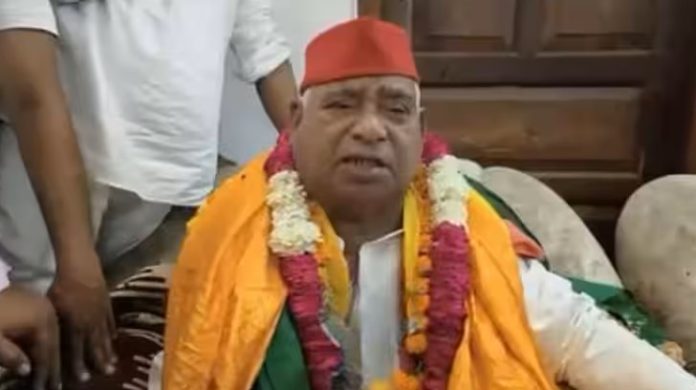6 June 2024: In a not-so-surprising turn of events, the BJP faced a significant setback in Faizabad, home to the Ram Mandir in Ayodhya. Samajwadi Party’s Awadhesh Prasad defeated BJP’s Lallu Singh by over 54,000 votes, raising questions and sparking debate about the reasons behind the BJP’s loss.
Unpacking the Defeat
The BJP’s strategy of focusing on the construction of the Ram temple and the consecration of Ram Lalla’s idol in January, just months before the Lok Sabha polls, failed to yield the expected results. Despite BJP stalwart Lallu Singh contesting from Faizabad, the parliamentary constituency encompassing Ayodhya, he was defeated by Samajwadi Party’s Awadhesh Prasad by a margin of over 54,000 votes. Prasad, a nine-time MLA and founding member of the SP, emerged victorious after a close contest.
Several factors have been attributed to this not-so-unexpected outcome:
- Caste Dynamics: The victory of Prasad, a Dalit candidate, highlights the support he garnered from over 2.5 lakh Passis in the constituency. The Samajwadi Party capitalized on a strong coalition of OBCs, Dalits, and Muslims, who together constitute 50% of the electorate. This caste equation played a crucial role in the BJP’s defeat.
- Local Resentment: The local population expressed dissatisfaction with not receiving adequate compensation for land taken for development projects in Ayodhya. There were complaints that while Ayodhya’s infrastructure was developing, locals were not reaping the benefits, with outsiders profiting from the new projects. The city’s transformation led to various challenges for residents, including issues with barricades, police presence, traffic diversions, and bureaucratic dominance. In rural areas, villagers experienced a sense of insecurity, and in urban centers, property transactions were regulated, and land acquisition notifications were issued for further expansion.
- Failed Campaign Strategy: The BJP’s heavy reliance on the Ram temple card backfired. The local populace felt that the party’s campaign focused too much on religious symbolism rather than addressing their immediate socio-economic concerns. This sentiment was captured in the Samajwadi Party’s slogan “Na Mathura, Na Kashi, Abki Baar Awadhesh Pasi,” highlighting the shift in voter preference away from BJP’s religious rhetoric.
- Internal Party Tensions: There were internal tensions between the party’s Delhi and Lucknow units, which may have further complicated their campaign efforts.
Historical Context and Broader Impact
Since 1984, the Samajwadi Party and the Congress have each won the Faizabad seat twice. The BJP gained prominence in Ayodhya after 1991, with Vinay Katiyar, a Kurmi and Hindutva icon, winning the seat three times. However, with caste becoming a focal issue, the BJP’s influence waned. This election marks the first time since 1957 that Faizabad has elected a Scheduled Caste representative to Parliament.
The BJP’s loss in Ayodhya extends beyond this seat, as the party also lost in nearby constituencies such as Basti, Ambedkarnagar, and Barabanki. This defeat is seen not only as a setback for the BJP but also as a blow to their Hindutva agenda.
Conclusion
The Ayodhya result underscores the importance of local issues and caste dynamics in Indian elections, illustrating that even strong ideological symbols like the Ram Mandir cannot always guarantee electoral success. The BJP’s campaign strategy, which heavily relied on religious symbolism and the development narrative around the Ram temple, did not resonate with the voters who were more concerned with socio-economic issues and felt alienated by the party’s approach. The defeat in Ayodhya, a significant symbolic seat, highlights the need for the BJP to recalibrate its strategy to address the broader concerns of its electorate.




